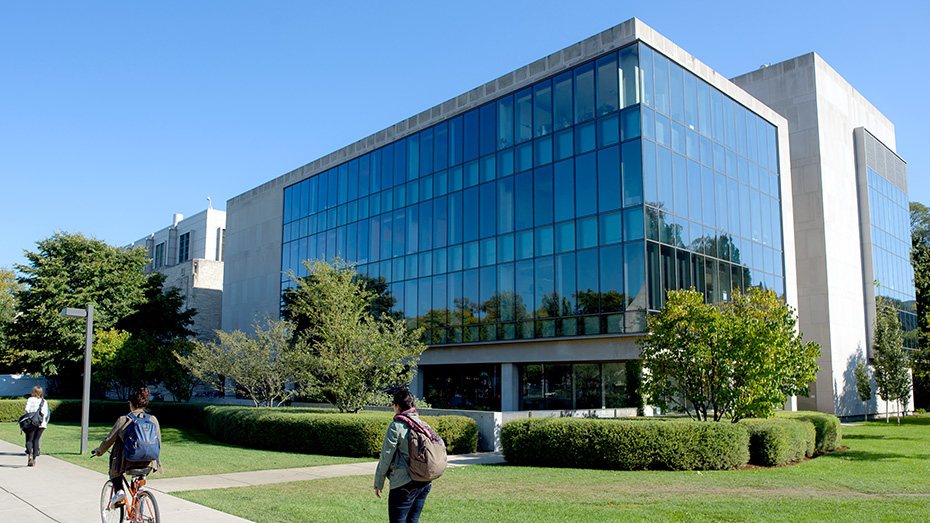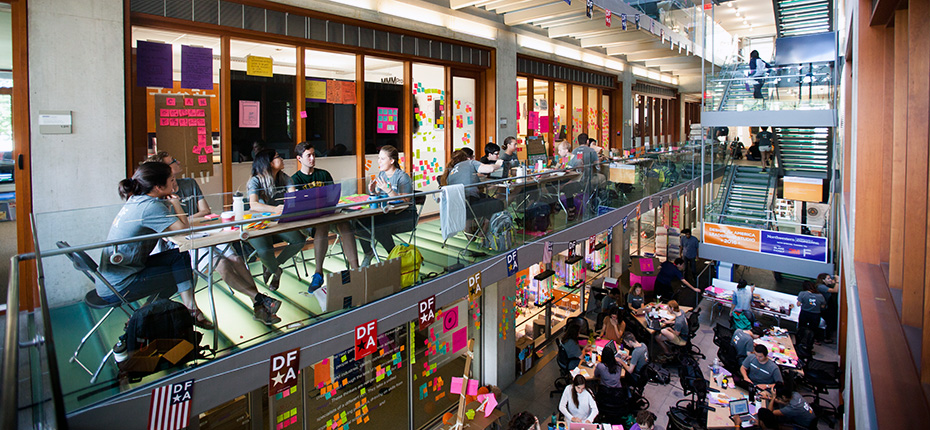Using Design to Solve Human Problems
At Segal Design Institute, students learn to design with user needs in mind

Making the world more wheelchair accessible requires more thought and effort than simply replacing stairs with ramps. One team of Northwestern students learned this lesson the hard way.
“We went out multiple times with a wheelchair to test different bumps, curbs, steps and ramps,” said Nathan Miller, a mechanical engineering major. “Even where ramps existed, it was so difficult to roll up them.”
“From that, we could understand how the ramp affects the user,” added William Barron, a computer science major. “We better understood which angles are climbable and which are not.”
We're not looking at big data or insights from a thousand people. We're deeply mining the stories of a few people to find often unarticulated needs. ”
Building empathy and deeply understanding a user’s needs are crucial components of the human-centered design process, which is at the heart of research and courses taught at Northwestern’s Segal Design Institute. Although the world has become increasingly absorbed in big data and finding insights in “the numbers,” this process appears smaller, more personalized, more specific — and more human.
“Empathy is the foundation of design thinking,” said Greg Holderfield, director of Northwestern’s Segal Design Institute. “We’re not looking at big data or insights from a thousand people. We’re deeply mining the stories of a few people to find often unarticulated needs that might be different from what the data show.”
By applying design thinking to challenges such as accessibility, students and researchers can produce fast, thorough, transformative solutions that have the power to change lives. After designers sort through messy, ambiguous user needs, they identify the correct problem to solve. Then they generate many ideas for solving it, iterate on those ideas, and implement the optimal solution.
In the case of Miller and Barron’s team in Northwestern’s Design Thinking and Communication course, the application of design thinking led them to construct a portable, telescoping ramp that is sturdy enough to hold a wheelchair but lightweight enough to carry around. As is common with the design process, this prototype did not arise until after several iterations and failures.
“When we first tested the prototype, the walls buckled under very little weight,” Miller said. “That wasn’t exactly ideal.”

Although Northwestern’s history teaching design thinking began in 1997 with the singular first-year class now called Design Thinking and Communication, the enterprise has since grown to comprise a suite of programs and courses, including the BS in Manufacturing and Design Engineering, the Segal Design Certificate, MS in Engineering Design and Innovation, Master of Product Design and Development Management, and even a massive open online course (MOOC) called “Leadership through Design Innovation.”
“Segal was originally rooted in Northwestern Engineering, and we hoped to give a human-centered design perspective to engineers,” Holderfield said. “That’s grown, morphed, and encompassed a variety of programs. To me, that’s the beauty of it.”